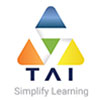This Oracle DBA Training Course intends to provide you in-depth understanding of the Oracle Database Server Administration. You will learn about the Oracle DBA Architecture, various concepts, database structures, memory and process architecture, security, schema objects, data backup and recovery.
About Oracle Database
Who should take this training?
Software developers and IT professionals
Database analysts and administrators
SQL programmers and architects
Project Managers
Those aspiring for a career in Oracle DBA
Prerequisite
Basic knowledge of database will be helpful
Course Content
Database Introduction
What is the Oracle database? How it functions? pre-requisites, oracle database, multiple non-CDB’s share nothing, oracle database 12c installation, multi-tenant architecture, non-CDB oracle system data mixed with user data, multitenant container database, pluggable database.
Oracle Database 12c Architecture
The Architecture of Oracle server, the key components – Oracle Instance and Oracle Database, the various file types – data files, control files, redo log files, benefits of CDB, easier management of database, support for oracle database resource manager, pluggable database (PDB), database instance, contents of CDB and pluggable DB, control files and redo log files, shared oracle supplied metadata, root container, data dictionary, creation of PDB’s, seed PDB, limit PDB
Oracle Storage Structures
The basics of Oracle Storage structures, logical storage units like tablespaces, data blocks, extents and segments, database Schemas, Schema Objects, Operating System blocks, table statement and way to check “create table”, the instance, the CDB, containers, root containers, PDB, local user and common user, local privileges and common privileges, steps to create a container database, creating a container database using sqlplus, database configuration assistance
Memory & Process Architecture
The Oracle Instance consists of background processes and memory structures, learn about the Oracle process and memory architecture, shared pool, redo log buffer, and buffer cache, different methods of creating PDB, steps involved in PDB, using PDB$SEED, without FILE_NAME_CONVERT, synchronization, plug a non-CDB to CDB, plug a non-CDB into CDB using DBMS_PDB, clone PDBS, plug and un-plug, plug unplugged CDB in to CDB
Alert & Trace files
The Oracle background process errors can be monitored using the Trace Files and Alert Logs, learn how this can be deployed for Oracle Administration and support.
Database Startup & User Requests
The methodology of starting a database instance, initializing parameter files, preparing for startup, serving user requests, understanding of the Server process and user process, administrative activities on PDB, new views associated with PDBS, determining which PDB you are in, four functions, opening, closing, and altering the open mode of PDBS, setting the default and temporary tables places for a PDB, using the alter system command from within a PDB, instance parameter change impact
Managing data with ILM
Automatic data optimization, ILM components, ILM challenges, what is automatic data optimization, heat map and ADO, DBA heat map segment view, monitoring statistics, creating compression polices, creating storage tiering policy, preparing evolution and execution
Hands on Lab :- Automatic Data Optimization, Reduction Policies, Alter Policy
Database Security
Learn about the powerful Oracle database security features, data privacy, regulatory compliance, “create user” process, altering and dropping users, generating profiles and limiting resources, auditing, activity monitoring and blocking.
Database Schema Objects
Understanding of Database Schema objects, the various types available like views, tables, clusters, indexes, sequence, database links, packages and procedures, learning how data is stored in database tables, creating of temporary tables and external tables.
Database Resource Manager
Resource manager. Resource manager and pluggable database, managing resource between PDBs, CDB resource plan basics:share, CDB resource plan basics:Limits, creating a CDB resource plan, creating a CDB resource plan:SQL example, enabling a CDBresource plan, managing PDB resource plan
Deep dive into Schema Objects
Mastering the database Schema objects, learning Materialized View, deploying user-generated schema object for generating sequence, the balanced search tree index structure for placing and locating files, learn about data concurrency and data consistency in multi-user databases, the concepts of Locking and Deadlocks.
Oracle Network Environment
Study the client/server Network Environment, configuring the network, connecting to the database, the Oracle Network Environment and database link, starting up a instance, SHOUT DOWN, NOMOUNT, MOUNT, OPEN, PDB, OPEN, clone PDBS.
Oracle Backup & Recovery
Understand how Oracle database ecosystem backup and recovery is deployed, the database testing, database standby, Media recovery options, backup in offline mode, CDB backup and recover, archiving challenges and solutions, in data base archiving, security and performance: audit architecture, consolidation: unique audit trail, extended audit information, data pump audit policy, new administrative privileges, new administrative privileges:SYSBACKUP, new administrative privileges:SYSDG, new administrative privileges:SYSKM
Oracle Recovery Manager (RMAN)
Learn the significance of Oracle Recovery Manager, how it deploys performance, management and restoration of entire databases, learn about SQL Loader, Oracle Data Pump for import and export and support for External Table.
Data Dictionary & Dynamic Performance Tables
The Oracle Data Dictionary contains information related to database privileges, objects, users, and roles, learn Dynamic Performance Table for identifying instance-level problems, get complete knowledge to work with Oracle DBA, connection access DBA, data dictionary views, after CDB creation, alert log file, provisioning new pluggable databases NOARCHIVELOG mode, media failure, flashback CDB, data dictionary views
Database Tuning
Introduction to database tuning, ensuring higher throughput, lowering response time of time-critical applications, optimizing the storage space, SQL scripts, deploying Index Selectivity, Index Statistics and Table Statistics for tuning the database, understanding Oracle Chained Rows and Locks.
Database Tuning Continued
Deep diving into Oracle Database Tuning, shared pool tuning, improving performance using Data Dictionary, tuning of Data Dictionary, deploying PL/SQL code, code reuse, and database buffer.
Call Now- +91-921-276-0556


